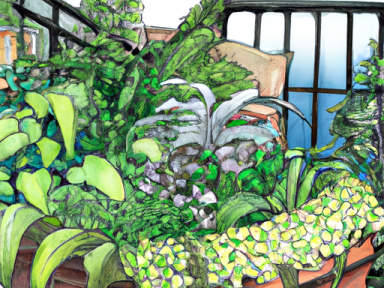Setting Up a Container Garden
In times of crisis or uncertainty, it is crucial to have the knowledge and skills to be self-reliant. One of the best ways to ensure a sustainable food source is by setting up a container garden. Whether you live in a small apartment or have limited outdoor space, a container garden can provide you with fresh produce and peace of mind. In this article, I will guide you through the process of setting up a productive container garden, suitable for small spaces or urban environments.
1. Choose the Right Containers
The first step in setting up a container garden is selecting the appropriate containers. Look for containers that are large enough to accommodate the plants you wish to grow and have drainage holes to prevent waterlogging. Consider using recycled materials such as buckets, soda bottles, or even old wheelbarrows to reduce costs.
2. Select the Ideal Location
Identify an area in your home or on your balcony that receives adequate sunlight throughout the day. Most fruits and vegetables require at least 6 hours of direct sunlight daily. Ensure that your chosen location is easily accessible for watering and maintenance.
3. Choose the Right Soil
High-quality soil is vital for the success of your container garden. Use a well-draining potting mix that is rich in organic matter. Avoid using garden soil, as it may contain pests or diseases that could harm your plants.
4. Pick the Right Plants
Consider the available space and the specific requirements of the plants you wish to grow. Opt for compact varieties or those specifically bred for container gardening. Some excellent choices for a container garden include tomatoes, lettuce, herbs, peppers, and dwarf fruit trees.
5. Watering and Fertilizing
Container gardens tend to dry out more quickly than traditional gardens. Check the moisture level of the soil frequently and water when it feels dry to the touch. Use organic fertilizers or compost to provide necessary nutrients to your plants.
6. Pest Control
Keep a close eye on your container garden for any signs of pests or diseases. Use natural pest control methods such as neem oil, companion planting, or homemade insecticidal soap to protect your plants without the use of harmful chemicals.
7. Harvesting and Maintaining
Regularly harvest ripe produce to encourage further growth. Remove any spent plants and replace them with new ones to maintain a constant supply of fresh produce. Prune and trim plants as needed to ensure proper airflow and prevent overcrowding.
By setting up a container garden, you are taking a crucial step towards self-reliance and preparedness. Not only will you have access to fresh, nutrient-rich produce, but you will also gain valuable knowledge and skills in sustainable gardening. Start your container garden today and be prepared for whatever may come your way.
Remember, self-reliance is the key to survival!




GIPHY App Key not set. Please check settings